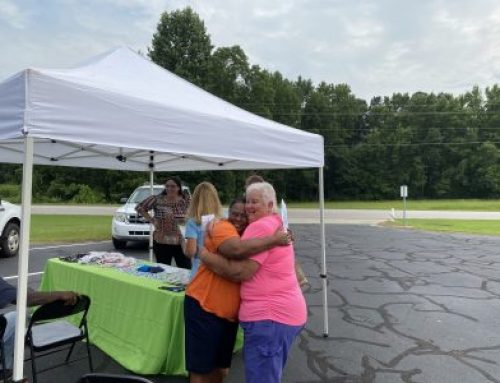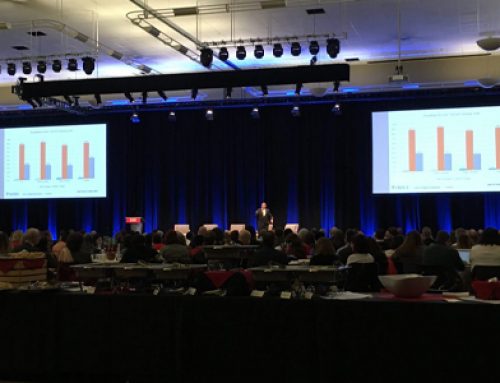This post was originally published on ISLR.org
It’s all about the Upload. If you are the owner of a small engineering business with dense blueprints to send to your European clients, or a specialized country doctor who depends on the quick transmission of x-rays, a digital film effects company, a photographer or a local broadcaster, your ability to upload your dense information to your colleagues, clients, and residents means business. For Gig City, Wilson in North Carolina, offering gigabit upload speeds to its community is essential to ensure local businesses thrive.
According to a recent Speed.Net report, upload speeds in the United States compared to the rest of the world are dismal. If you live in Hong Kong (60 Mbps), Singapore (47Mbps) and South Korea (44Mbps), you are in the drivers’ seat with the fastest upload speeds in a world where time wasted means money. If you are in the U.S., as of February 2014, you’re in the slow lane. We rank 41st at 6.69 Mbps. But not if you live in Wilson. With access to Greenlight’s gigabit residential upload speeds, living in Wilson means being competitive and working easily with the world’s top achievers.
The owners of Wilson-based Exodus FX know this. Digital artists Brad Kalinoski and Tinatsu Wallace found Wilson in their nearly impossible search for small-town affordability but world-class broadband infrastructure. Two years ago, they started a small growing boutique that caters to the visual effects needs of global film and television production companies. When their broadband rates in West Virginia skyrocketed despite the local broadband infrastructure seriously underperforming, the company’s survival depended on relocating.
“We had to choose an area that could offer a low cost of doing business, while delivering an infrastructure better than that of other states and countries,” wrote Mr. Kalinoski, a three-time, award nominee for his special effects contributions to Black Swan and LOST, the Final Season. “We even considered places like Seattle, Japan, Austin and Kansas City for its Google fiber. But when weighing the cost of living, cost of doing business, diversity and broadband infrastructure, it really wasn’t much of a debate.” They moved to Wilson.”In less than an eight hour period, we pushed almost 18 Gigabyte of data to and from New York, Los Angeles, Canada and to other states. We are finding that the bottleneck is no longer us, it’s the client’s bandwidth.”
“Timing out” and “that bottleneck” drew web-designer and digital musician, Dave Baumgartner, to Wilson as well. “I was doing consulting web design work from my home in Raleigh using Time Warner Cable’s “Turbo boost” Internet access, but could not get my file uploads to clients on the west coast to complete because they would time out.” This was the fastest residential internet access available in Raleigh. “I would start an upload before dinner, it was still going when I went to sleep, and failed by the next morning.”
Dave moved to Wilson which allowed him to serve and provide innovative web design to clients anywhere in the country. “Having a fast and reliable connection also allowed me to test bandwidth-intensive technologies like embedded HD video and audio, and various streaming technologies.” (Greenlight does not data cap the way other large incumbents are known to do.) Dave recently recorded a vocal drum track in Wilson for a group based in another state, and then sent the files to their producer in California in what seemed like fractions of a second. He is now in talks to be involved in a recording project where no two performers are in the same state, and a few of them are in Europe. In between all that, Dave and Wilson’s Greenlight operations found each other. He is now Greenlight’s web designer.
Designing the future is what also attracted Wake Forest fiber optic entrepreneur, and aviation photographer, Dan Holt, to Wilson. He can’t move to Wilson because he owns his home in Wake Forest, so he commutes 30 minutes each way to access Wilson’s gigabit symmetrical speeds from his satellite office at the City’s local business incubator. His vision for the Wake Forest Fiber Optic Initiative started years ago “even before Time Warner Cable released their 30/5 and 50/5 tiers.” “I am an aviation photographer, and rely on service like flckr and smugmug (and more recently Google+ and Google drive) to backup my photos. More often than not, each one of my photos averages about 25 Mb each.” A couple of thousand of these after a weekend shoot and you have a multi-gigabyte upload. “This would take days to upload… you can only do partial uploads.” So Holt found himself juggling his work schedule so he could upload his photos, and projects would sit for six months “Having access to gigabit fiber allows me to upload everything I have in one sitting, allowing me to focus more on editing and selling photos.”
Holt has hooked up four servers to Greenlight’s gigabit speed, which virtualize the home of the future with multiple, simultaneous, Netflix video streams and dense file upload exchanges for his Wake Forest Fiber Optic Initiative. “The future is about video,” he stated, citing a study showing 50.2% of internet traffic is video — Netflix and YouTube – not Bit Torrent.” His Town officials now have been able to physically see through Wilson’s Greenlight capacity, the economic vision he has for his own community.
An economic vision driven by bits of gigs, Whirligigs exactly, means something to Jeffrey Currie, Repair and Conservation Manager of the City’s new world-renowned Vollis Simpson outdoor Whirligig Park, Currie drives into Wilson every day from Nash County to manage the taking apart and rebuilding of thirty, sometimes, fifty-foot wind-driven sculptures from a farm in the county to the City’s downtown. The vision is to use this wind powered art to help drive the city’s economic future with STEAM (Science, Technology, Engineering, ARTS and Mathematics).
“Yeah, we like to use that word STEAM more and more.” laughed Currie, as he displayed the hand-held tablets that record the intricate pieces of this gargantuan move. “We needed to know what the Whirligigs looked like before they were taken apart.” Greenlight connected the warehouse to its Gigabit network. “We take high-resolution photographs of the sculptures before they are disassembled, scan older images of Vollis’ work and just upload them to Dropbox. This lets the artisans have a clear picture of how they should be restored, assembled and painted, because often there is little paint left after 30 years out in Vollis’ field.”
What was amazing is that Currie described these large uploads like he was flipping a switch. “It’s quick,” he said, without thinking about it. “We’re burning out the computers, not the internet,” quipped Don Davis, who takes photographs and who does much of the uploading for the collections section. Greenlight’s upload speeds facilitate the rebuilding of this important economic driver in seconds instead of months.
“The media consistently focuses on the download part of the broadband equation, but if your business handles information at any level, your business is really all about the upload. If you can’t get your information out, whether it’s your quarterly insurance reports to your corporate office, engineering blueprints to your China clients, or your latest digital art creation to New York, you simply can’t compete. We are living in an information economy now,” said Will Aycock, General Manager of Wilson’s Greenlight system.
“The thrust of Greenlight is captured by our three guiding principles,’ said Aycock. ‘Supporting the economic health of the community, improving the delivery of city services, and enhancing the quality of life for the citizens of Wilson. This is our gig in Wilson.”





